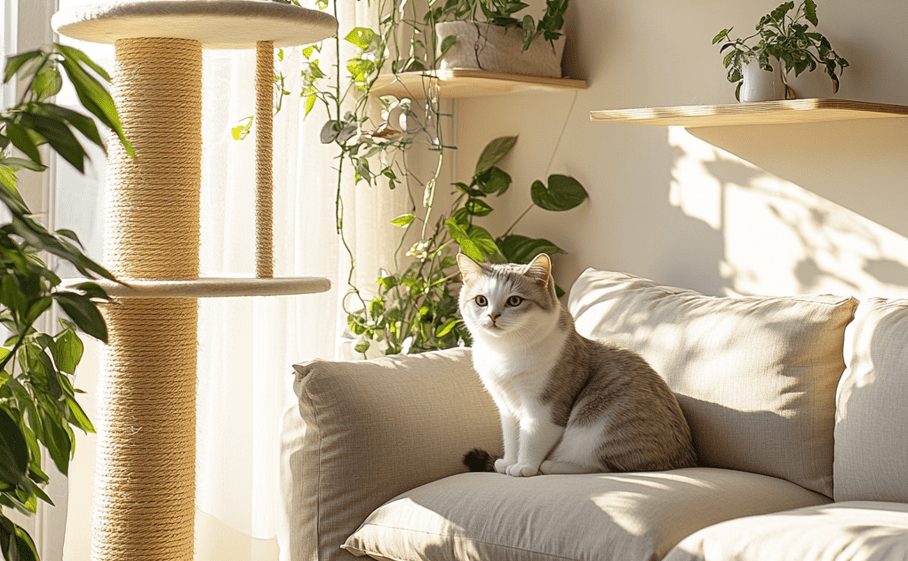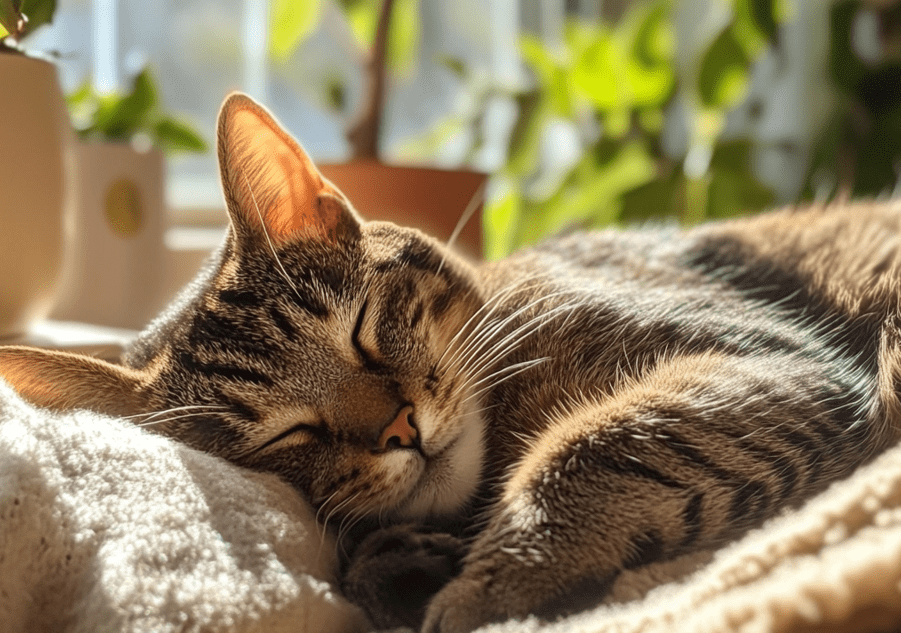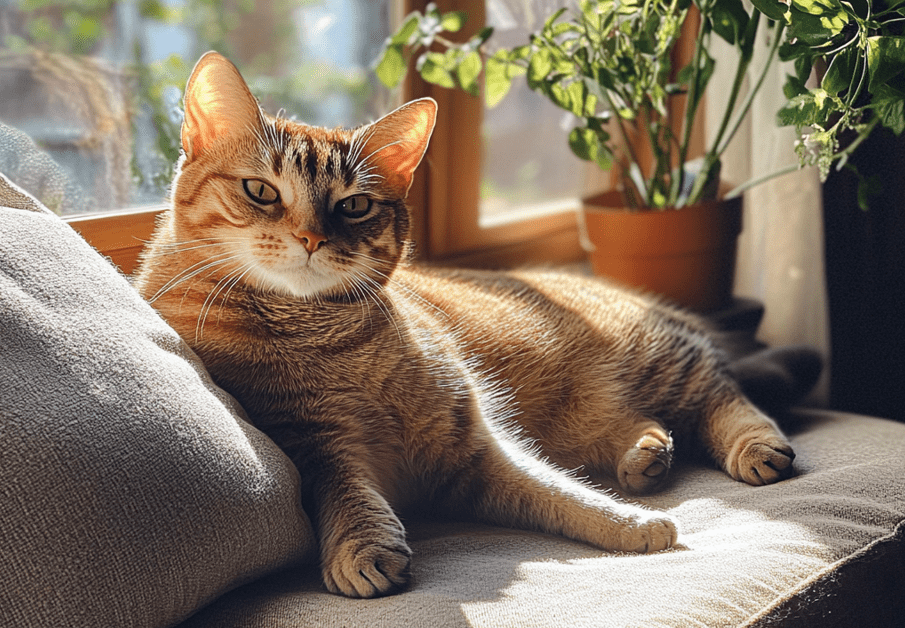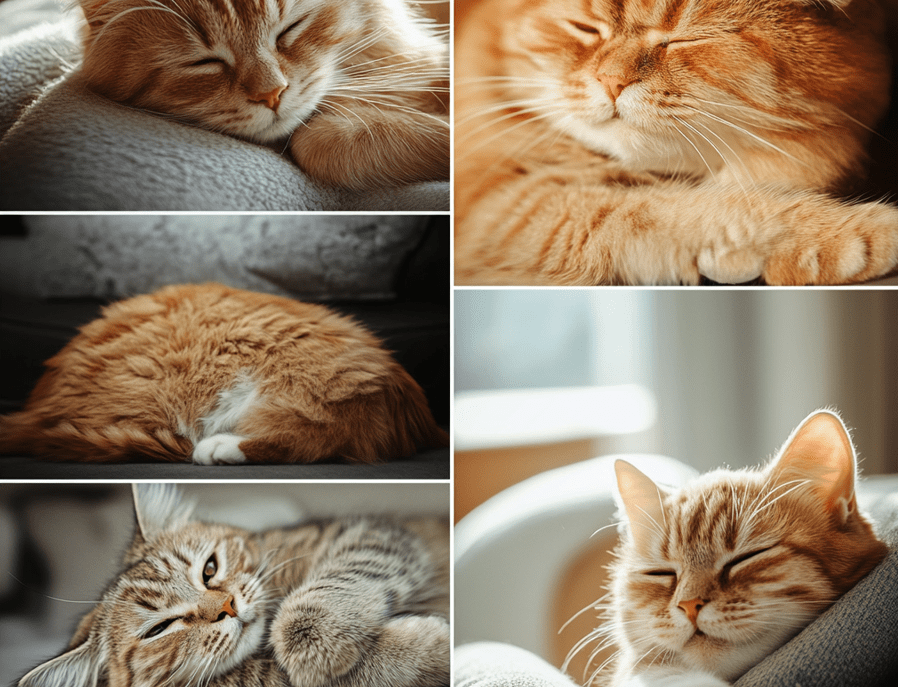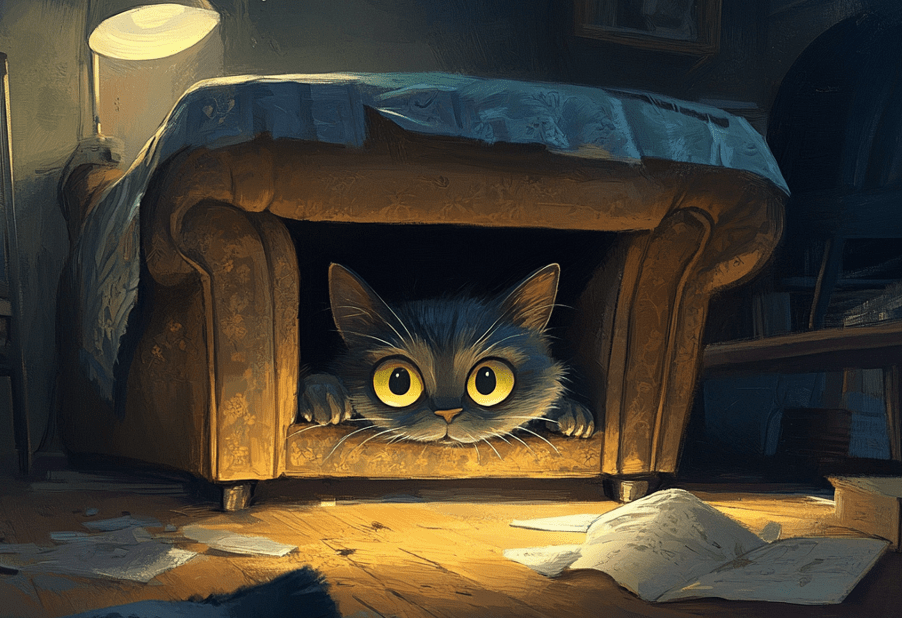
Stress can detonate not only health conditions but also mental conditions. Cats can stress out the same as humans. These stresses can break out through a well-organized room environment. Where cats feel safe and enjoy their life. There is no such working medicine for stress without enjoyment. Creating a stress-free environment is essential for cat’s mental and health growth which brings them happiness. Cats experience stress-related issues such as digestive problems, urinary tract infections, and behavioral disorders when they don’t feel relaxed.
The stress on cats plays negative effects such as behavioral changes and health issues. The stressed cat can be in an attacking mood for a maximum time such as biting or scratching aggressively, making noise with angriness, etc. or becoming fully quiet or lifeless. The stressed cat can also be physically unfit. They can be affected by diabetes, high blood pressure, obesity, etc. diseases.
You can provide a comfy bed, more stimulating instruments like an interesting food station, a workout station with hurdles, and a scratch pad to reduce stress. You can keep your room less dense with furniture. Crowded places can increase the stress on cats.
To watch the summary of this article, just watch this video-
Understanding the stress in cats:
Common cause of stress: cats like to live in a known territory. They don’t want to change their own territory. The changes in territory can hamper their daily routine life and health very badly. Cats don’t want to share their room with another pet easily. Even if it is another cat. But there are many examples where cats and other pets are bosom buddies. If the cat accepts the pet when it is only possible to happen. Stimulation can encourage your cat to lead a stress-free life.
Sign of stress: Cats can increase their vocalization due to experiencing stress. Cat tries to send a message to others by creating various sounds. These sounds can be divided into meowing, yowling, hissing, and growling. Meows And yowls may be used for asking for help in a crying mood. Hissing and Growling are sounds that cats naturally make when they feel threatened. and these sound severe to warn other animals to stay away.
Grooming releases endorphins into a cat’s body which can raise feelings of contentment and happiness. Stressful situations may push cats to perform this grooming behavior.
Urinating outside of the litter box is the most common sign of stress in cats. Cats do this because the smell of their own urine comforts them.
Cats under stress can show aggression like stalking, pouncing, scratching, and biting. Cats mainly show aggression when they feel unsafe.
Stressed cats try to hide due to feeling threatened. This happens when the stress level is vulnerable.
Designing a Cat-Friendly Environment
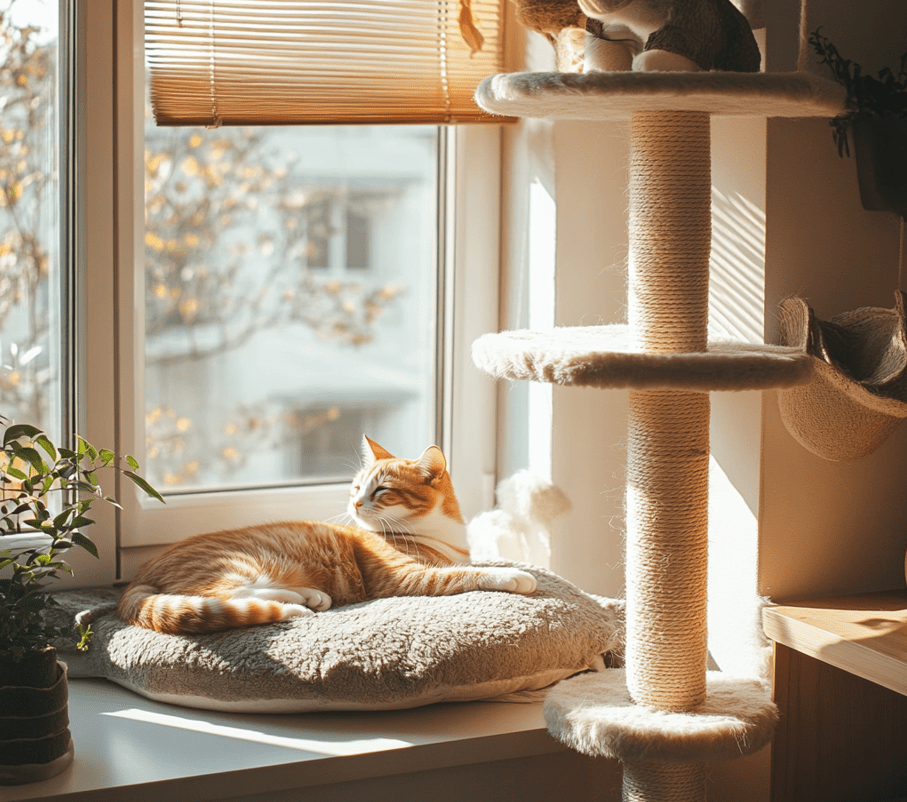
Cats need self-space or hiding spots for relaxation, or private retreats. You can feel the need to create caves or provide boxes or designated quiet rooms. You can set up an interactive vertical space like cat trees, shelves, or wall-mounted perches to give your cat to observe and sense the territory.
Provide scratching posts and pads. Cats have a natural instinct to scratch. You can provide scratch pads made with sisal or cardboard. Scratch pads reduce the risk of damage to your furniture and cat both.
Interactive toys can help a cat to be stress-free and playful. Stimulation of your cat’s mind with interactive toys and puzzle feeders can improve your cat’s stress situations.
Use multiple litter boxes for your cat. To maintain a stress-free bathroom experience for your cat, set up a number of litter boxes placed in various areas of your home. And ensure they can access it easily.
Keep a sunbathing spot for your cats. Cats love to bask in sunlight. Consider a place for sunbathing near windows where your cat can enjoy sunbeams.
You have to establish a routine playtime for your cat. You can use interactive toys, feather wands, or laser pointers to engage in stimulating play sessions that strengthen your bond and provide exercise.
Cats are like human babies. So, you have to treat your cat the same as your baby. Just as you would childproof a home for a baby, you must cat-proof your home for your catish comrade. You have to secure open spaces like windows or balconies to protect your cat. you may install a cat patio or secure netting for balconies. Assure windows have strong shields to prevent falling. Cats may chew on electrical cables because of their curious nature. For this reason, you have to hide cables and strings or use cable protectors or tape cables with walls. You have to hide or store safely medicines, daily used household cleaners, pesticides, and certain human foods that are harmful if swallowed by cats. Make sure to keep these products out of reach of your cats. Give off Toxic Plants from your home decoration. Some common decorative plants are toxic to cats, such as lilies, poinsettias, and philodendrons. Nominate cat-safe plants like spider plants or cat grass.
Maintaining Routine and Consistency
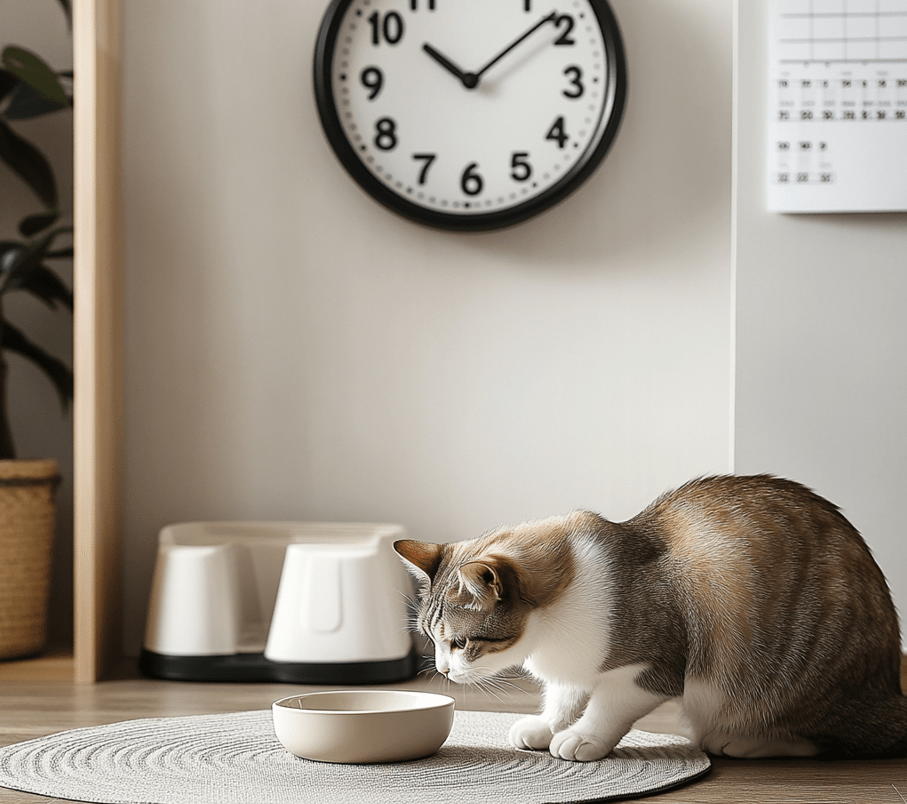
routine less life is messy and causes various health and mental issues. You should have to provide food in time. For your cat’s wellness, you have to keep a specific time for playing with your cat and have to maintain the litter box regularly. Maintaining routine and consistency increases interaction with your cat and helps to build trust.
Reducing Stress Triggers in Your Home
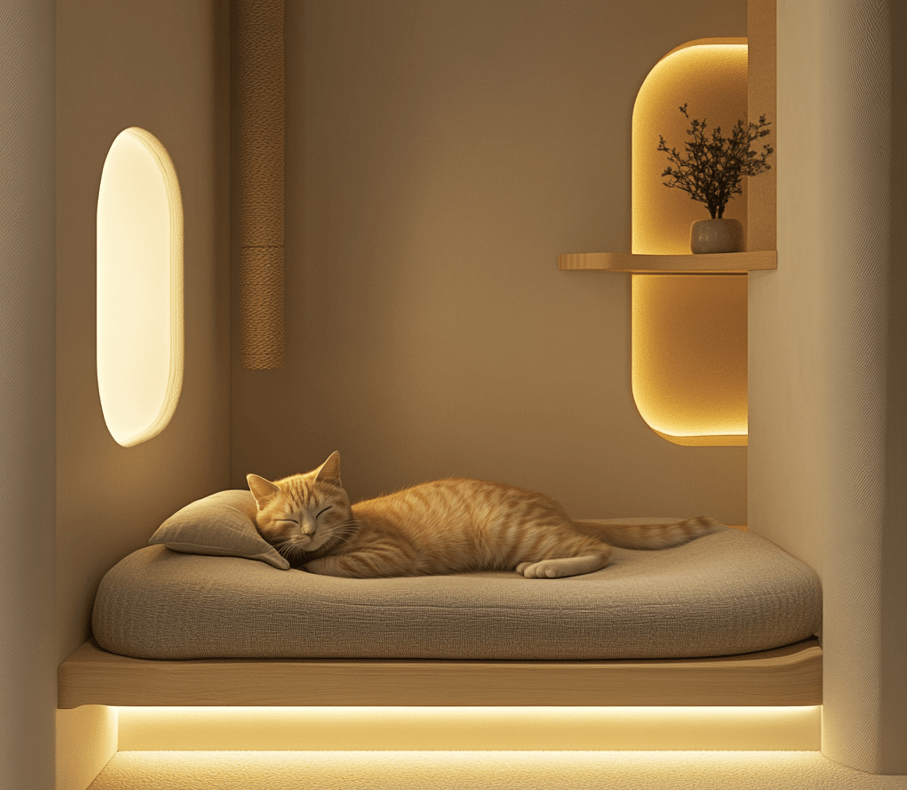
Cats feel threatened due to noise. This is their natural instinct developed to save them from predators. So, continuous noise can produce severe stress in cats. Provide quiet and calm zones to your cat. Use low noise-making machines in household work. Try to make your room soundproof.
To keep cats calm and stress-free you have to increase safe interactions with other pets. To introduce them to other cats you have to keep them separated for a few days. Firstly, introduce the smell of each other. Encourage interaction through the door. After a few days, open the door just a crack so the cats can see each other but cannot stick their heads out. And in the last stage, let them out.
Many household items are toxic to cats. Keep these items in a separate secure place. Remove harmful plants from the room.
Using calming Aids:
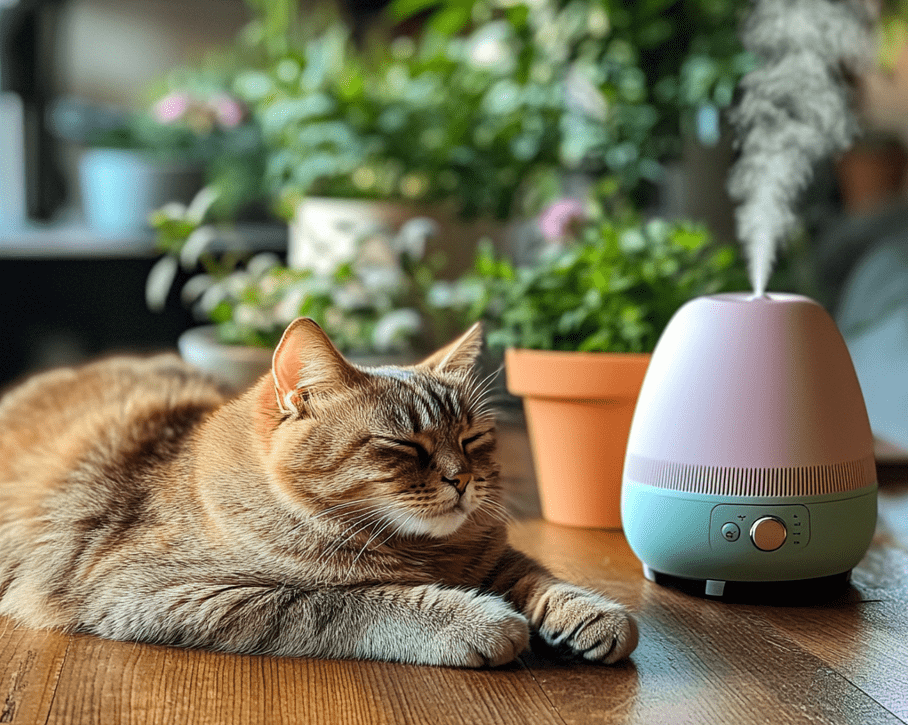
Pheromone diffusers, sprays, collars, and other products can help create a calming and soothing environment for our pets. Use pheromone spray to calm and keep stress-free your cat.
You can plant cat-safe calming herbs like valerian or chamomile to reduce stress. Chamomile is One of the most widely used herbal remedies in the world. Valerian Root is not only safe for your cat but it can be beneficial! It aids in relieving stress and anxiety and helps to promote play and exercise for house cats who prefer to lay around all day. It also helps to promote a bond between pet parents and kitties.

